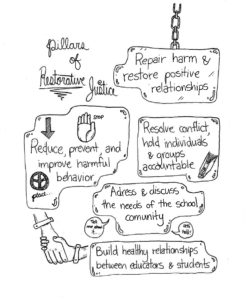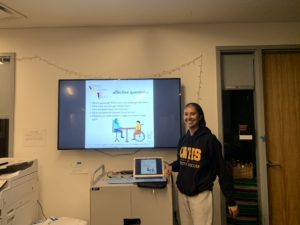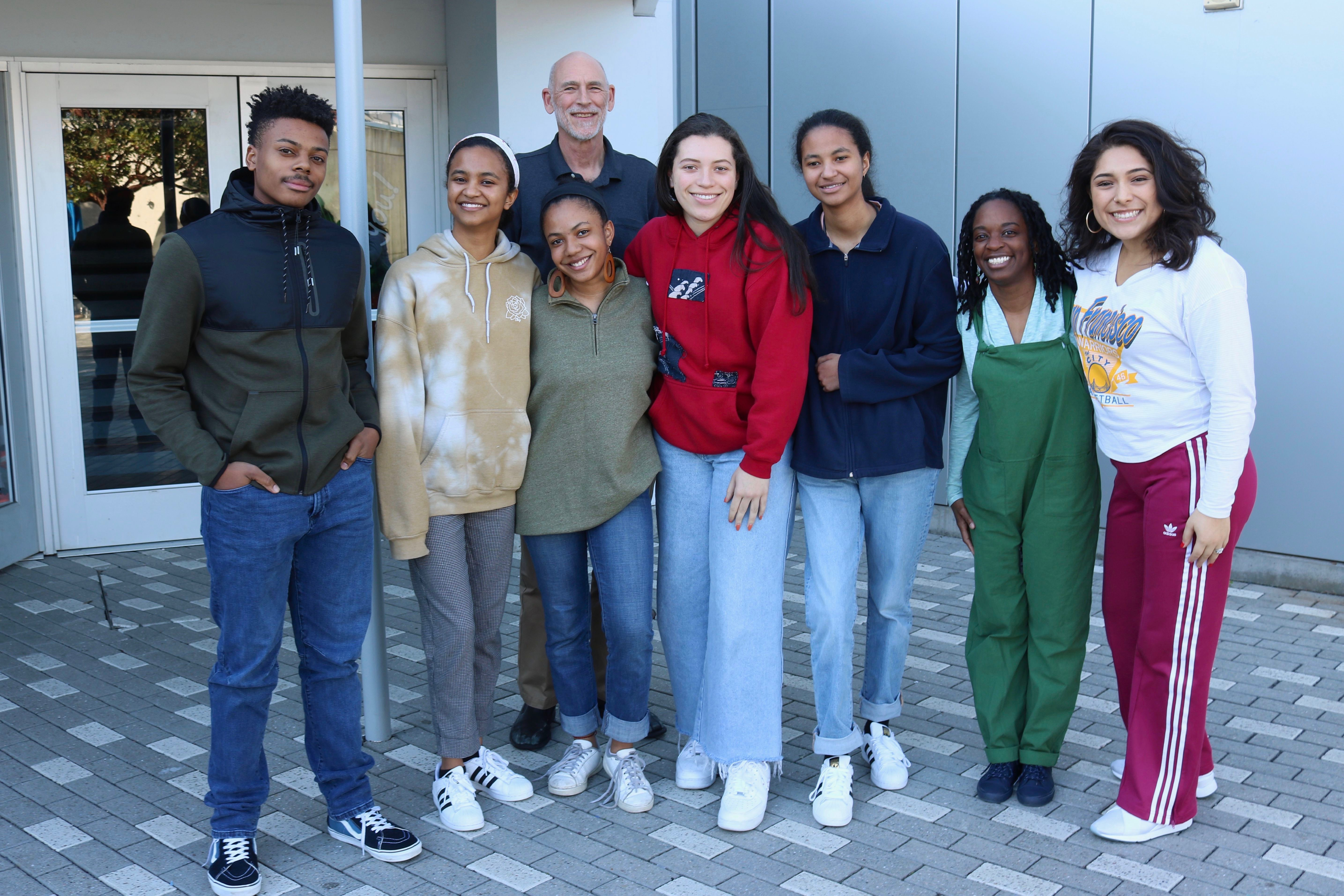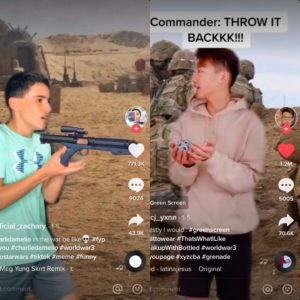At LWHS, like with many San Francisco schools, there have been multiple instances of non-black students using the N-word. In recent years, LWHS has been trying to answer the question of how to respond to these occurrences in a restorative way so that real healing and justice can happen.
Many students interviewed said that LWHS did not address the use of the N-word in a way consistent with other infractions. For example, in December 2019, after many students left huge messes for the facilities team to clean up, the administration made an all-school announcement that outlined a very clear succession of consequences that were directly connected to the wrongdoing, from replacing our free periods with cleaning periods to canceling formal.
“I want to see the same action that was taken on the fact that kids didn’t clean up their plates on the fact that kids are saying the N-word,” said Ariana Holmes ’20.
Although the messy plates were caused by only a few students, the whole school had to face consequences. Maya Dobson ’20 feels like the use of the N-word is a similarly communal issue: “It’s affecting all of us in different ways that you just don’t know…So it’s a community conversation.”
Students and faculty interviewed said that the current consequences for saying the N-word are inconsistent and ambiguous.
Elise Bourelly ’20 said, “I’m an advocate for clear consequences and guidelines. Students should understand; ‘Oh if I say it, this is exactly what’s gonna happen, so I’m not gonna say it.’” Bourelly feels like this lack of clarity allows students to get away with saying the N-word.
Journey Moore-Prewitt ’21, one of Student Council’s Student Inclusion Chairs, cited the fact that even the students who have gotten one-day suspensions do not need to explain the suspension in their permanent record.
“When white students are directly attacking students of color at our school, they are still being protected by the school, but the school is doing it in a way that makes them seem woke,” said Moore-Prewitt.
Naomi Fierro, Director of Student Equity and Inclusion, sees an opportunity to create a new system across the school that outlines what will and won’t be tolerated around the use of verbal slurs. Fierro believes this new system should be based on restorative justice practices.
According to The Restorative Practices Handbook, “to be ‘restorative’ means to believe that decisions are best made and conflicts are best resolved by those most directly involved in them.” According to the book, restorative meetings should involve agreements between the students who caused harm and students who were harmed. This process would include all voices of stakeholders and would provide opportunities for wrongdoers to apologize and make changes.
One of the key aspects of restorative justice in schools is that healing and growth can occur. This means that not only that the students who caused harm grow and stay in the community, but the students who were harmed are supported and given room to heal and feel comfortable reintegrating themselves into the larger community.
For Fierro, rather than the school saying to the perpetrator, ‘you messed up, so you have to leave,’ by using restorative justice, the school “keeps that person in the community, there is so much more accountability and room for growth and real transformation.”
Fierro noted that some people worry that “you’re just letting people off the hook and you’re just forgiving really easily.”
Restorative justice is profoundly different from this conception. “It really builds a space to just listen without already coming up with your rebuttal. And it creates room to empathize with the other person and that’s really hard,” says Fierro.

drawing by Primo Lagaso Goldberg
The N-word originated in times of American slavery as a way to falsely justify violence against African American people. It has continued to be used to reinforce racial violence throughout American history.
Bourelly believes that non-black people should never say the N-word: “If you aren’t a black person and you can’t identify with the black experience, don’t say it. Of course the intent affects the harmfulness of it. It makes it more harmful if it is a targeted slur used to cause harm, but either way it’s a harmful word.”
“The N-word was meant to degrade people from the start,” said Josiah Densby ’21. “It was meant to dehumanize people, so give people back their humanity and don’t say it.”
For Densby, the N-word is not just a racist term of the past.
“It’s happening right now,” he said, “it’s not somewhere else. It’s right here, it’s everywhere.”
Dobson feels that, because of its history, the N-word is much more than an individual insult. When somebody calls someone the N-word “it’s actually a much deeper blow than just talking about you. They are talking about you and everyone in your family and everything that you know and everything that you are” said Dobson.
Many people who called non-black people out for saying the N-word faced backlash and guilt-tripping from other students. In Dobson’s freshman year, a non-black student in her class sang the n-word in a song. She told her teacher, and right after, a different student started reprimanding her.
“[The student who spoke to Dobson] was like, why would you do this? You just ruined this person’s life. And I started thinking, oh my god, I shouldn’t have said anything, I just did something terrible. I had to remind myself that no, [the use of the N-word] was extremely disrespectful to me, and there’s no reason that I should keep that to myself. It’s necessary for me to go to somebody and make sure that this gets addressed so that they don’t go on continuing to say this in the rest of their life and hurt other people” Dobson said.
Another student also said she overheard students rapping the N-word in class. She was the only black student in that class. A few days later, the two girls who said the word confronted the student and told her that she was spreading rumours that were not true, and that she didn’t hear what she thought she heard.
“I couldn’t believe they blamed me for this,” the student said. “I don’t think I’ve ever been more angry than after that confrontation. I was literally shaking, I could barely walk.”
Students interviewed recognized a pattern of being shut down for speaking up for themselves. As a result, some students didn’t feel comfortable going to their teachers or administrators.
“At Lick specifically, there have to be changes that make black people feel more comfortable in this community, and more comfortable telling their stories,” said Holmes.
Holmes said that shutting students down and acting defensive towards the perpetrator comes from the larger idea that the students who cause the harm tend to be the ones that are protected.
“They don’t ever come ask us how that affected us,” Dobson said. She, like many black students, were harmed by hearing the N-word at school, did not feel like she had been supported by the school, even if there were consequences for the student who said it. As Bourelly said, “it’s not enough to just punish someone. When people get hurt, there needs to be someone to address that hurt.”
“There’s a lot of one-sided tension, and the other person thinks everything is fine and dandy, and you’re like, I don’t want to be around you because you make me feel incredibly unsafe,” said Holmes.
Students expressed that the current punitive system at Lick exacerbates the injury of the students harmed by racial slurs and doesn’t provide room for the perpetrator to grow, and instead leads to resentment and pain. When students get called out, as opposed to thinking about their mistake and the ways they can right their wrong, they immediately get defensive and try to push the blame away from themselves. Because students are ostracized for speaking up for themselves, they no longer feel comfortable to do so. This further victimizes and silences the person being harmed, and focuses all of the attention on protecting the person who is causing harm.
Although most of the research on restorative justice programs in schools is in its early stages, early studies have found many benefits of restorative justice. According to “Restorative Justice in U.S. Schools: A Research Review,” these programs can improve matters of discipline, attendance, culture, and academics.
Bourelly noted that a restorative justice system at her old school changed the way students viewed punishment. Student discipline “was more like a collaboration between all the students rather than just antagonizing each other,” Bourelly said.

photo by Roma Edwards
For Head of School Eric Temple, one challenge with restorative justice practices is that the person who was harmed might not be willing to make amends or engage with the person who caused harm. Fierro emphasized that it is not the role of the harmed student to teach those around them. The restorative practices center around the person who was harmed should focus on addressing their needs.
“Would you like to be a part of the process? You absolutely have the right to not be because there are a lot of other things you need to take care of,’” Fierro said. “And if you don’t want to be a part of the process, then the least I can do as an adult is inform you along the way of what I am doing.”
A recent time that LWHS used aspects of restorative practices in this context was in 2017 when two white teachers said the N-word during Sam Mihara Day of Justice. Steve Simon, LWHS math teacher, was one of these teachers. As a leader of a white affinity space, he told a story about a racist store owner and he said the N-word when paraphrasing the store owner. When students found out that Simon had said the N-word, they were upset, and the administrators asked him and the other teacher to make a public apology.
“The notion that in no context was it okay to utter that word, regardless of audience, regardless of whether you were quoting someone else, that was simply not an understanding that I had,” Simon said. He said the social norms around the use of the N-word have changed throughout his life.
“The crux of my learning was when I came to understand that there were students who knew me who felt hurt and disappointed and maybe even betrayed by just the very knowledge that I had said that word regardless of the context. That was the turning point for me,” Simon said.
Simon eventually read a statement of apology at a school-wide community meeting. “What I had to express was that I really sincerely understood that I had made a mistake and that I knew that I had lost some people’s trust,” he said. “and that it was now on me to win that trust back.”
Simon continued, “I was very aware in the aftermath never to say anything to anyone that suggested that I thought I deserved sympathy for having to do that. If I say to you, ‘boy that was a really hard thing to do,’ I already know what the correct answer is, which is that there are people who have to do things that hard every day to function in this community.”
Moore-Prewitt said Simon’s apology was “healing in a way.” But for her, the apology was bittersweet: “Even if you know he is sincerely sorry, you still look at him differently. You feel like, did he actually learn?”
Moore-Prewitt feels like Simon’s apology was one step of restorative justice. The second step of restorative justice practices is for the perpetrator to make an agreement with the injured party in order to actually learn and grow. For Moore-Prewitt, the restorative goals would have been more realized if Simon’s growth and learning had been communicated to her and the rest of the harmed community.
When these incidences of students saying the N-word came about, Temple struggled with how to allow the overall student body to heal while also respecting the privacy of the students involved in the incident. “You can have restorative justice amongst the parties, but if it’s been broadcast all over social media, how does the whole community buy in?” he asked.
Tamisha Williams, Dean of Adult Equity and Inclusion, said that one way to address the needs of the larger community could be to have a transparent framework for students who were hurt or angry to know what’s going on. Williams suggested a list of restorative questions the administration would ask when these issues came about. These questions could include for the offenders: how do you think what you did should be addressed, and for the people who were impacted: what do you need?
If these questions were widely available, students could begin to use them in their own situations. “That’s where I see the school as being a really important part of society building and citizenship building,” she said “We want not just the curriculum to move on with you all, but also the ways of being.”
Williams also thinks that having transparent frameworks of how racist incidents would be handled would hold the adults accountable, providing a consistent way that they would address these incidences when they come up. According to Temple, instances of racial insensitivity have been addressed in many different ways depending on the age of the offender and the context of the incident. These consequences have included required professional development, attendance at the White Privilege Conference, readings or videos with historical context, and suspensions.
Students asked the administration to create a protocol that addressed the use of the N-word. The administration made four protocols which were brought to the faculty and staff, and the English department elaborated on those protocols. Two years ago was the first year the English teachers had a fully articulated language policy, which is now a paragraph included in all LWHS English class syllabi. Other departments are working on articulating policies.
“As an English teacher, my job is precisely to work with language and to teach students how to deal with language. And yes, a lot of that language is hurtful,” acknowledged Catherine Fung, Acting Chair of the English Department. Fung doesn’t believe in not reading books because they contain the N-word, because many of these books are really important to understanding histories and our identities. For Fung, the English language norms try to answer the question of “How do we have conversations about language and yet still take care of people’s emotional responses to it?”
Williams said that these norms “acknowledge that we’re gonna see words in our texts, provide a framework for how it’s going to be addressed–including that the teacher will provide some contextual information–and then also give permission to the class and to the adult to say, ‘when we stray away from this, here is how we can handle it.’”
Williams said that because every student goes through the English department, the language guidelines “are now a conversation that every student is having.” This conversation is an important supplement to the larger-group lessons that happen in Frosh Rotation. After discussing the history of racism and the significance of racial slurs and through different lenses, students can start to truly understand their importance.
“We don’t want [the class protocols on language] to become about immediate censorship, we want it to become about actual thoughtfulness about all of the things that we are putting in front of young people and other adults,” said Williams, describing the way LWHS has been thinking about how classes discuss trauma as a whole, as opposed to just slurs. Williams explained that this larger-scale work has been one of the reasons why the process of creating class protocols has taken multiple years.
Some examples of classes dealing with traumatic topics have been when an English teacher invited the school counselor to present to her class about sexual violence and incest before they read about it, and a history teacher giving a presentation to contextualize slavery for the book they were going to read.
This preparation “means that your students are actually cared for, and their brains are in a safe space for learning,” Williams said. “And otherwise your most vulnerable students–whatever that topic is related to–are not learning.”
Another way that the school has reacted to the use of the N-word is through the student inclusion chairs, Jeremy Lum ’21 and Moore-Prewitt doing a presentation about the N-word to the whole school. The inclusion chairs presented about why the LWHS community should not say slurs, gave historical and present-day context of the N-word. Moore-Prewitt shared her own experience of hearing a person screaming the N-word on public transportation and feeling utter terror, and then coming back to school and hearing a white student say the N-word because his friends dared him to.
“Making eye-contact with the person that I was literally talking about in the story was really overwhelming,” said Moore-Prewitt. She became less nervous as she kept talking, because she felt like LWHS students were very respectful and attentive. “It’s easy to argue with the facts,” she said, “but if you share personal stories people will try to understand a little bit more, or at least listen.”
Moore-Prewitt felt as though the presentation was just a start to educating the school on the use of the N-word, and that it mostly fostered short-term conversation. As student inclusion chairs, she and Lum are planning on working towards more long-term change by creating programs that specifically target the freshman class.
One of the outcomes of the presentation that Moore-Prewitt was most excited about was a follow-up Black Student Union (BSU) meeting that allowed black students to discuss their experiences with the N-word in a safe space. This meeting was a discussion space where people could learn about how slurs impact people. It was made up of a mix of adults and students, upperclassmen and underclassmen sharing personal stories and advice on how to deal with these situations.
Densby, one of the leaders of BSU, felt the meeting touched on the idea that for restorative justice to function, there needs to be a strong community.
Fung thinks that LWHS needs to create a culture that is able to talk about racist incidents without the isolation and divisiveness that can sometimes happen in our current community. She thinks that LWHS needs to have these conversations on a regular basis as opposed to just in a disciplinary context.
Williams thinks that if issues can be handled at a student-to-student or student-to-teacher level in a restorative system with a strong sense of community, everyone will have the tools and feel safe enough to handle personal situations.
Restorative justice has the power to start the process of healing the communal pain caused by the use of the N-word because it is much deeper than a single punitive disciplinary action.







